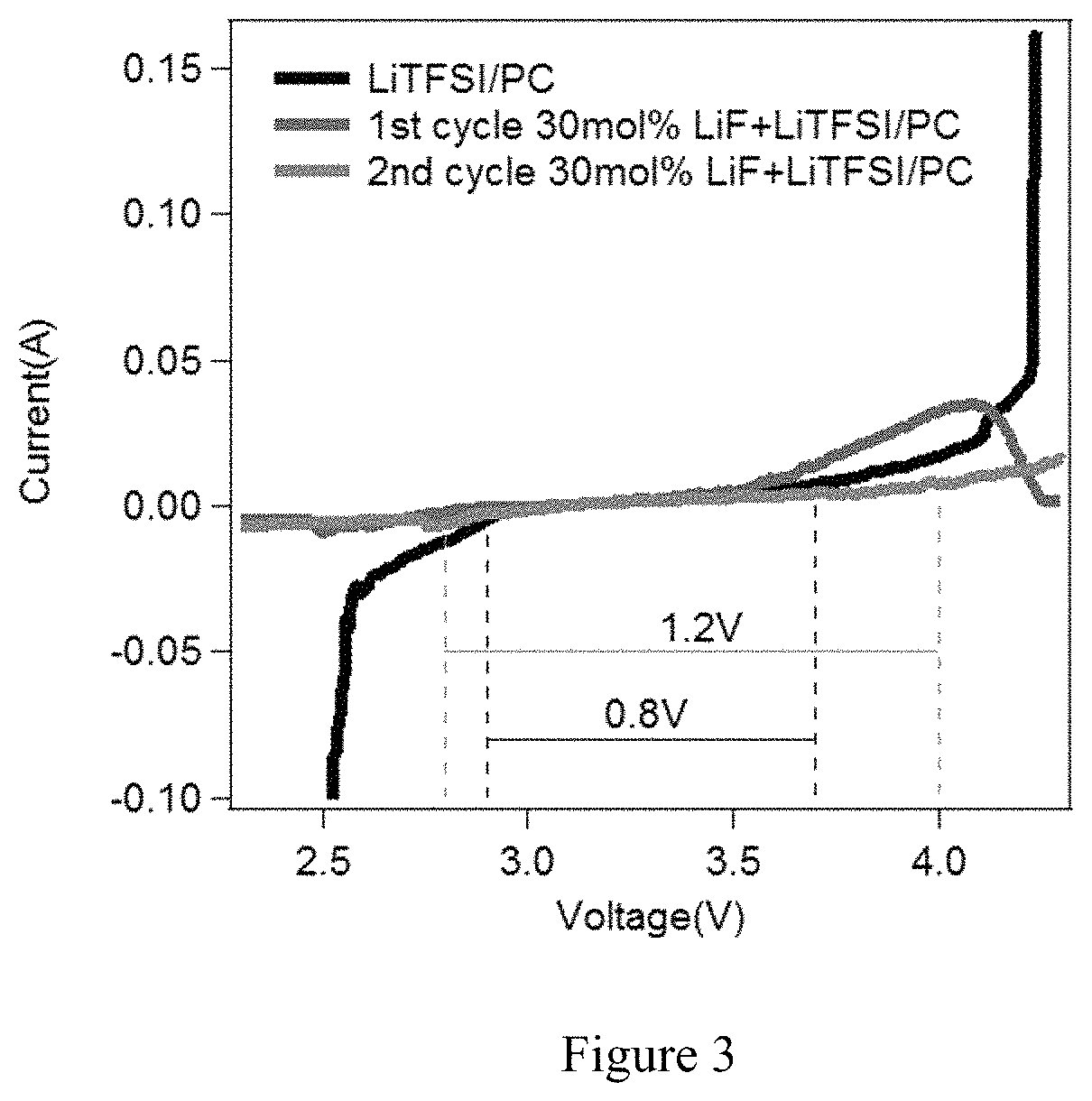Dendrite inhibiting electrolytes for metal-based batteries
a technology of dendrite inhibiting electrolytes and metal-based batteries, which is applied in the direction of cell components, cell component details, electrochemical generators, etc., can solve the problems of unstable electrodeposition and non-uniform metal
- Summary
- Abstract
- Description
- Claims
- Application Information
AI Technical Summary
Benefits of technology
Problems solved by technology
Method used
Image
Examples
Embodiment Construction
[0046]The embodiments provide an electrolyte composition that may be used in a metal-based battery while inhibiting dendrite formation. The electrolyte composition comprises an aprotic solvent and a simple halogen material, and may consist essentially of the aprotic solvent and the simple halogen material. The electrolyte composition may also include a metal salt that includes a complex halogen containing anion. Preferably, the simple halogen material comprises a metal halide salt that includes the same metal as used within a metal electrode whose dendrite formation is inhibited in accordance with the embodiments.
General Considerations
[0047]The embodiments provide an electrolyte that may be used in conjunction within a metal electrode within a metal-based battery, and which inhibits dendrite formation on the metal electrode within the metal-based battery, thus providing the metal-based battery with enhanced cycling performance. The embodiments are applicable within the context of me...
PUM
| Property | Measurement | Unit |
|---|---|---|
| pore size | aaaaa | aaaaa |
| pore diameter | aaaaa | aaaaa |
| current density | aaaaa | aaaaa |
Abstract
Description
Claims
Application Information
 Login to View More
Login to View More - R&D
- Intellectual Property
- Life Sciences
- Materials
- Tech Scout
- Unparalleled Data Quality
- Higher Quality Content
- 60% Fewer Hallucinations
Browse by: Latest US Patents, China's latest patents, Technical Efficacy Thesaurus, Application Domain, Technology Topic, Popular Technical Reports.
© 2025 PatSnap. All rights reserved.Legal|Privacy policy|Modern Slavery Act Transparency Statement|Sitemap|About US| Contact US: help@patsnap.com



